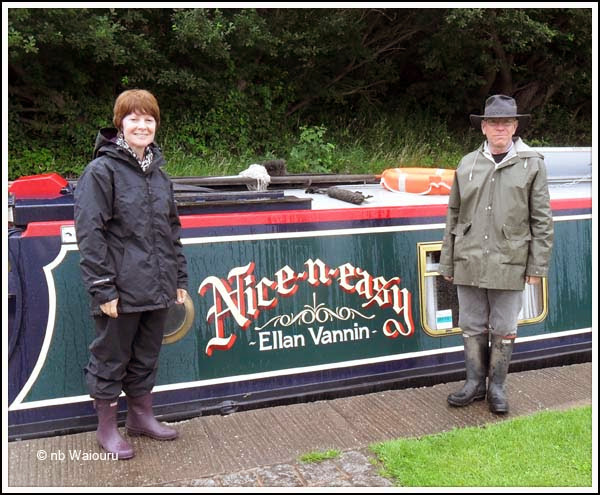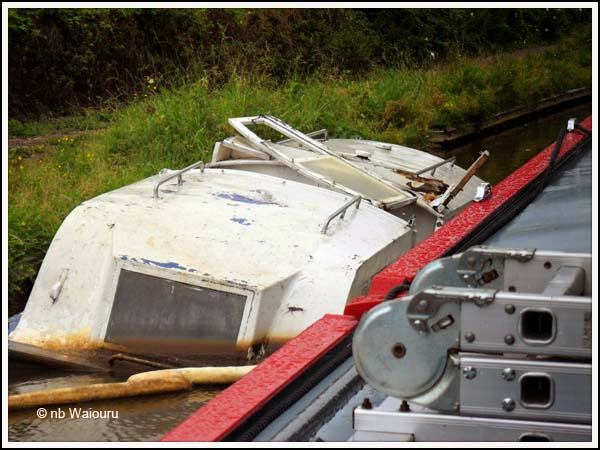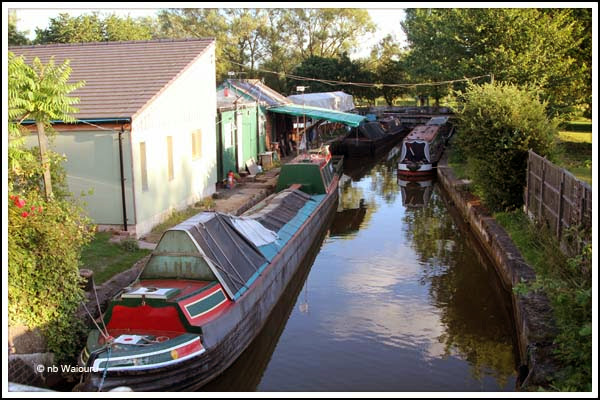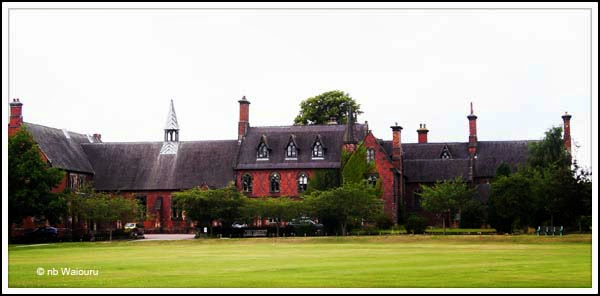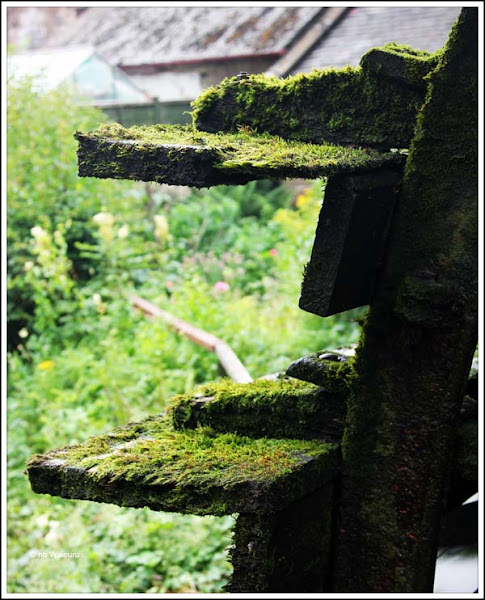After watching the weather forecast last night the plan was to cruise in the morning when it would be dry and then moor to avoid the predicted afternoon showers. So much for the plan!
We woke to droplets of liquid sunshine impacting on the top side of the canal. thinking it would probably get worse we cruised a very short 200 metres to the water point at Wheelock where we proceeded to top up the water tank. It was obvious filling the tank would take some time but that wasn’t an issue as we had the entire canal to ourselves. Then a boat arrived also looking for water.
It was nb Nice-n-Easy with owners Helen and Derek. Helen mentioned they read Waiouru’s blog!
There was time for one of those canal side conversations whilst waiting for our respective water tanks to fill. It transpires Helen & Derek have started a new phase in their lives by recently purchasing Nice-n-Easy and becoming full-time “live-aboard” boaters. They are experienced hirers but; like us; have discovered living on a small narrow boat doesn’t mean you can’t misplace something you later need! ![]()
Two other boats arrived just as our water tanks were full so there was only time for a quick goodbye and we were on our way towards Middlewich. Great to meet you both and hope to see you again somewhere out there on the network.
We’d only cruised around two bends when we came upon a very tired plastic cruiser that had stopped for a rest on the bottom of the canal. Or perhaps the weight of the rain had become too great.
At least there was a boom around it to minimise the impact of any spilled fuel and oil. It looks like the boat has been sunk for quite some time and I assume CRT want the owner to recover it rather than them having to pay. Somehow I think it’s been abandoned!
We made good progress, mostly meeting boaters at locks, which is an advantage. Jan discovered the rain had caused her legs to shrink. This resulted in her getting a soggy tail climbing over the gate beams. We arrived in Middlewich at 11.30am and found plenty of vacant moorings on rings. This is a significant departure from our previous visits to Middlewich. But on those occasions we were on a hire boat and it was the end of the day. All the damned “live-aboard” boaters had already grabbed the best moorings. Still, if you can;t beat them… join them! ![]()
After lunch I wandered down to Kings Lock Chandlery and browsed around. Jan had already looked on line and found out they sold Craftmaster Paint. Despite the rain it must have been our lucky day as they had light grey paint in stock. On the way back to Waiouru I stopped and checked the opening hours of the fish & chip shop opposite. We’ve both read good reviews about the shop and plan to try them for dinner tonight. I’ve also booked a car from Enterprise so we can reach the Settlement Checking Service in Manchester for our visa appointment. I booked a small van as it was cheaper than a car (£27)!
Oh…… The liquid sunshine continues to fall!

